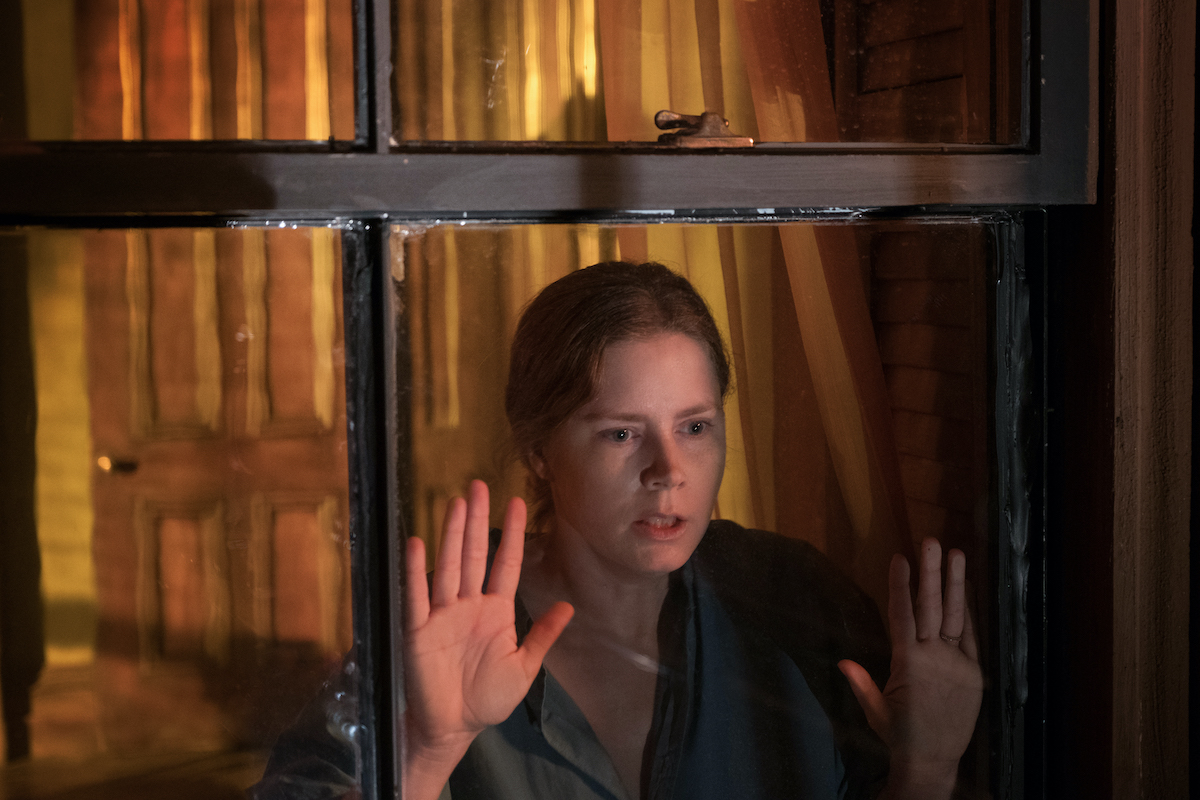The Woman in the Window Review: Don’t Even Bother Until the Joe Wright Cut Is Available
1/5 stars

On paper, Netflix’s The Woman in the Window had all the components of a total tour de force. The intimate psychological thriller stars the perpetually Oscar-snubbed Amy Adams, is directed by Joe Wright (Atonement, Hanna, Darkest Hour), with a screenplay written by the brilliant Tracy Letts, based on a mega-hit novel.
In its execution, this movie is an absolute mess.
With a movie like this, it can sometimes be hard to know where things really broke down. That’s not the case here. The Woman in the Window feels less like a full film than a composite of studio notes—an impression backed up by the numerous reports of extensive reshoots and massive changes made to better please test audiences.
The film was originally set to come out in October of 2019 (then pushed to May of 2020 for reshoots and pushed again because of COVID-19). In December of that year, Nine Inch Nails’ Trent Reznor revealed in an interview with Revolver that the entire “avant-garde” score he and Atticus Ross had created for the film had been scrapped because it no longer fit what the movie had become.
He said the film “underwent a transformation after some testing audiences,” and the two decided to “bow out.” “There’s no animosity on our end,” he added. “It’s frustrating when you did that much work and it’s gone. And we were proud — and they were proud — of the movie that it was.”
The score that made it into the film was composed by Danny Elfman and it, like the rest of the movie, is anything but avant-garde. It’s boring and bland and forgettable and seems to have actually made quite a bit of effort to avoid making any bold choices at all. Just like the rest of the film.
The Woman in the Window centers on Anna Fox (Adams), a child psychologist who is unable to leave her (gigantic, four [?] story) Manhattan apartment due to her intense agoraphobia. She lives alone, save for her basement tenant (The Falcon and the Winter Soldier’s Wyatt Russell), whose eagerness to help her take out her trash and do any other chores that might pose an issue given her condition, along with her apparent excess of financial comfort, make for a pretty convenient set-up.
Still, she suffers. In addition to not being able to leave her house, Anna’s husband (Anthony Mackie) and young daughter live elsewhere, though they talk daily. Her therapist (played by a conspicuously uncredited Tracy Letts) is condescending. She wafts around in dowdy, unflattering caftans (as if this isn’t the ultimate dream) although an early, unnecessary scene in her bra that reeks of test audience feedback lets us know that Anna still has Amy Adams’ slim body, just in case we were worried.
On top of all that, Anna’s excessive drinking is mixing badly with her many medications, causing her to possibly hallucinate (but possibly not?!) the murder of her new neighbor (Julianne Moore—or maybe it’s Jennifer Jason Leigh).
A.J. Finn’s novel was an immediate hit when it was published in January of 2018. It was the first time an author’s debut novel hit the NYT best-seller list at #1 right off the bat in more than a decade. And yet, it’s just not very good, and both the book and its author have abounded in controversies. The story borrows heavily from other Gone Girl imitations, most notably The Girl on the Train. It bears “striking similarities” to a novel by Sarah Denzil, Saving April. There’s also a considerable debt to movies like Alfred Hitchcock’s classic Rear Window, which Finn cited as an inspiration. The author (whose real name is Dan Mallory) studied Patricia Highsmith’s Tom Ripley conman novels at Oxford and seems to have modeled his life after the protagonist, leaving a trail of lies behind him on his path to becoming a best-selling novelist.
Mallory’s immense personal scandals aside (though you can read more about them in this New Yorker profile), his Talented Mister Ripley fascination did not equal an ability to write like Patricia Highsmith. The New Yorker accurately described the book as “much more a Tom Ripley novel than a Patricia Highsmith novel” and quotes Highsmith’s biographer Joan Schenkar as saying The Woman in the Window was “the most self-conscious thriller I’ve ever opened.”
If you’ve heard anything about the novel, you’ve probably heard about its ending—which I’m not going to spoil here but just know it is absolutely terrible. But the rest of the book isn’t anything to celebrate. It struggles to do anything with the few ideas it has and tries to mask that fact by chopping the book up into a hundred (that’s not an exaggeration) micro-chapters.
Given the book’s success riding the coattails of its genre, it’s no surprise that it was snatched up immediately for a film adaptation. It’s also no surprise that even this incredible creative dream team couldn’t make it work, especially if the studio was going to be so dedicated to pleasing test audiences.
The only glimmer of hope in this whole mess is knowing that somewhere out there, there is likely a version of this film that Joe Wright and Tracy Letts feel proud of, that represents their talents and the cast’s, that has an avant-garde Reznor-Ross score and loads of tension pounding through all of it.
Until that version is available, don’t bother.
(image: Melinda Sue Gordon, Netflix)
Want more stories like this? Become a subscriber and support the site!
—The Mary Sue has a strict comment policy that forbids, but is not limited to, personal insults toward anyone, hate speech, and trolling.—
Have a tip we should know? tips@themarysue.com